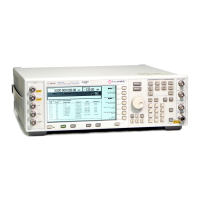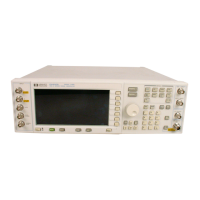5
www.agilent.com/find/esg
Bluetooth link types
Two types of links can be established between Bluetooth devices:
Asynchronous Connection-Less (ACL) link
The ACL link is a point-to-multipoint link between the master and all slaves participating
on the piconet. It is considered a packet-switched connection primarily intended for
transmitting non-time sensitive information, like data. The fundamental packet length in
Bluetooth systems occupies a single timeslot, as shown in Figure 1. Packets that occupy
multiple timeslots are used to achieve increased data rates on the ACL link because they
have larger payload fields.
Synchronous Connection-Oriented (SCO) link
The SCO link is a point-to-point link between the master and a single slave. It is
considered a circuit-switched connection primarily intended for transmitting time
sensitive information, like voice. All SCO link packets occupy a single timeslot; however,
the packet transmission rate varies depending upon how much voice information is
carried in the packet payload. The objective is to maintain a 64 kb/s link for voice
transmission. However, because of the overhead associated with FEC coding, packets
with FEC on the speech data must be transmitted at a faster rate than packets with
no FEC to achieve an equivalent speech data rate (64 kb/s).
Bluetooth packets
Packet types
There are many different types of packets used to exchange information on a Bluetooth
link. They can be generally categorized into three groups:
1. ACL link packets
2. SCO link packets
3. Control packets
Packet structure
All Bluetooth packet types are constructed based upon a standard packet structure,
Figure 2. The standard packet structure consists of three fields: access code, header,
and payload. In general, the access code and header fields carry overhead information
necessary to communicate over a Bluetooth link and the payload field carries the user data
to be exchanged. The amount of information contained within the payload field and degree
of forward error correction (FEC) changes significantly depending upon the packet type.
Figure 2. Standard Bluetooth packet structure.
Signal Studio software supports 13 different packet types, including both synchronous and
asynchronous link type packets. The Creating signals section of this document provides
additional detail about the structure of these packets and explains how to configure them
using Signal Studio.
Signal Structure
Access code
72 bits
Payload
0 to 2744 bits
Header
54 bits

